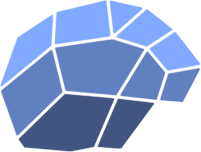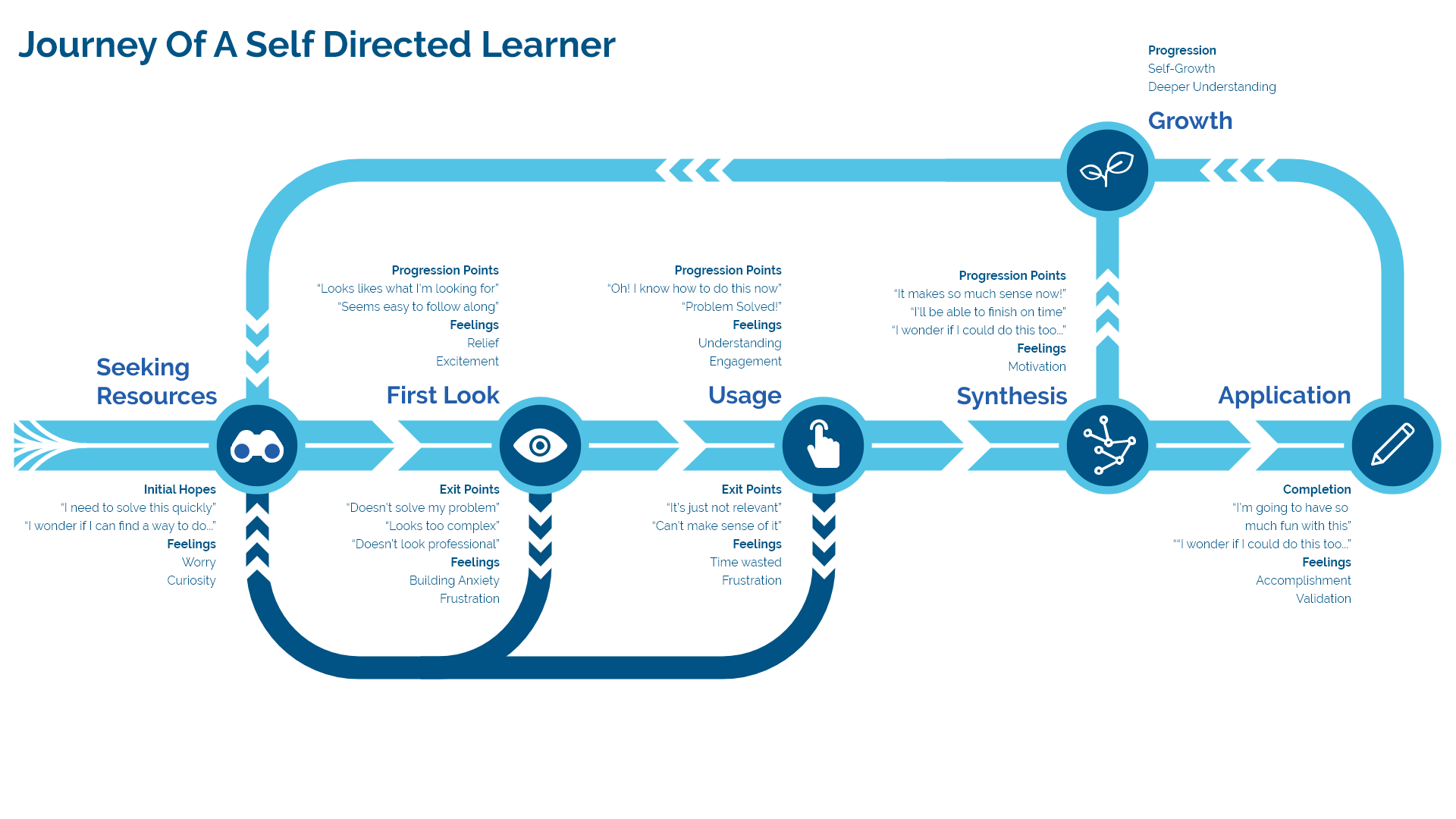
Construct
Sept 2019 / April 2020 - UX Research / Design
Part 2 & 3 coming soon!
View Live Project!
What Is Construct?
Construct is a web-based learning experience that enables self-directed learners think more actively about where, why, and how they learn best. Construct was created as the culmination of my Interaction Design capstone project and came out of multiple sprints of research, design, development over 8 months.
🏆 Capstone Publication
In April 2020, Construct was nominated by my faculty in the Interaction Design program and was published to Sheridan's research hub, Sheridan Source, as "Exceptional Student Work".
Special thanks to my professors Mark Shufflebottom and Meredith Thompson for their support and encouragement throughout the project.
Project Background
During my time at Sheridan, I experienced education as a student, tutor, and teaching assistant. The daily pain point for nearly every student, including myself: A lack of motivation when we needed to self-direct our own learning. I jumped at the opportunity to tackle this problem for my IXD capstone project.
HMW Statement
How might we facilitate deep learning processes in self-directed study?
Assumptions
My experiences had made me keenly aware of some of the issues learners run into while learning on their own. I would regularly help students who were juggling multiple projects at once, while also managing employment or family commitments. Other students would get lost in an ever expanding ocean of digital learning platforms and content.
Digital Learning Services On The Rise
Content creators on platforms like YouTube and specialized services like LinkedIn Learning & Udemy provide a nearly limitless amount of learning resources for nearly any topic.
Many Reasons For Self-Directed Learning
Whether rooted in passion, necessity, or curiosity, all self-directed learners are seeking to advance their education in a meaningful way.
A Learner's Time Is Valuable
Self-Directed Learners are spending their own time to advance their knowledge or understanding. In some cases, their time is limited by outside factors. In all cases, a Learner's time is valuable to them.
Choice Overload
The internet and other resources provide a staggering amount of resources to sort through. Given the amount of choice, it's impossible for Self Directed Learners to select the best or most applicable resource for their needs.
Exploratory Research - Literature Review
Literature review was crucial in understanding how different learning methodologies have been used both inside and outside of the classroom throughout history. I gained insight into how and where learners form their first ideas and thoughts on learning. From there, I looked at more recent theories about how our brains perform and process information during the act of learning.
Exploratory Research - Findings
Flow State
The difficulty of learning and the ability of learners to overcome the hurdles of it are directly tied to the concept of Flow State. The engagement and feeling of accomplishment experienced during Flow provide key motivations during learning, performance, or study.
Increasingly, researchers are trying to find ways to invoke or produce flow state during performance or study. This has even inspired genres of music like low-fi that purport to "increase focus and productivity" (though this claim has yet to see significant research as of 2020).
Meaningful Learning
Meaningful is increasingly becoming dominate in educational settings as an alternative to Rote Learning. Deep Learning has been shown to benefit learners by enabling longer retention of information and continuingly building and expanding on their understanding of a topic.
Meaningful Learning has been shown to benefit learners by enabling longer retention of information and continuingly building and expanding on their understanding of a topic.
The Learning Styles Neuromyth
Relatively common in formal education is the belief that learners are beholden to "types" of learning styles (visual, read-write, kinesthetic, etc.). Contemporary research has exposed that as a largely false generalization of the billions of unique learners around the world.
Shifting Focus & Getting Specific
Through my exploratory research I had discovered how broad the topic of self-directed learning was. I judged my work would be more impactful if I focused on a specific set of learners. Due to my proximity to learners in the creative industries at Sheridan (and thus, a breadth of research participants), it was a simple decision to rescope my work to self-directed learners in the creative industries.
Through my exploratory research I had discovered how broad the topic of self-directed learning was. I judged my work would be more impactful if I focused on a specific set of learners. Due to my proximity to learners in the creative industries at Sheridan (and thus, a breadth of research participants), it was a simple decision to rescope my work to self-directed learners in the creative industries.
Refined HMW Statement
How might we facilitate deep learning processes in self-directed study within the creative industries?
Research Objectives
Understand the process of Self-Directed Learners in the creative industries and how they interact with learning resources.
Examine and understand the current challenges and real world conditions under which Self-Directed Learners in the creative Industries use learning resources
Understand how Self-Directed Learners in the creative industries react to and attempt to solve their current pain points and unmet needs
Primary Research Methods
Semi-Structured Interviews
Semi-structured interviews allowed a breadth of data to be collected directly from self-directed learners. Starting with a general discussion topic and a list of overarching questions, interviewees shared their own unique experiences and their personal practices for self-directed learning.
Photo Ethnography
In many interviews research participants brought up how important their personal workspace was to their learning processes at home. I asked my participants to submit photos of their workspace for my project. This enabled me to both greater understand the individual participant's learning processes but also examine the spaces for commonalities and differences between participants.
Insights
The "Learning Styles" Neuromyth Revisited
Many interview participants described viewing learning through the lens of a "learning style" that they felt fit them best. Some described having "given up" on learning certain topics or techniques because they "knew" the style of instruction wouldn't fit their learning style.
Learners Thinking About Learning
Learners could describe in great detail the methods they would take to get engaged in self-directed learning. They came up up with specific habits and specific environments to work in that helped them "Boot-Up", enter flow state, or just work more comfortably.
While some habits were shared between learners, like shutting off smartphones before a working session. Most learners also had unique habits that helped them get engaged, like planning learning activities around "their personal brand" or only working in rooms with carpet flooring.

Learnings
Reducing Scope & Defining The Problem Space
By refining my HMW statement and reducing the scope of my project early on, I made my project a lot more feasible to accomplish given the timeline I had. Looking back, my primary research and resulting insights would certainly been weaker had I not taken the steps to better define my problem space and target audience.
User Creativity
Throughout my primary research, I was surprised by how thoughtful my research participants learners were about the problems they ran into during self directed learning.
Since this project, I've endeavoured to be more aware of the creativity and awareness that users have of their own problems and the solutions they've applied to solve them. This thought was the spark of inspiration for my own approach to design, which you can read about on my about page.